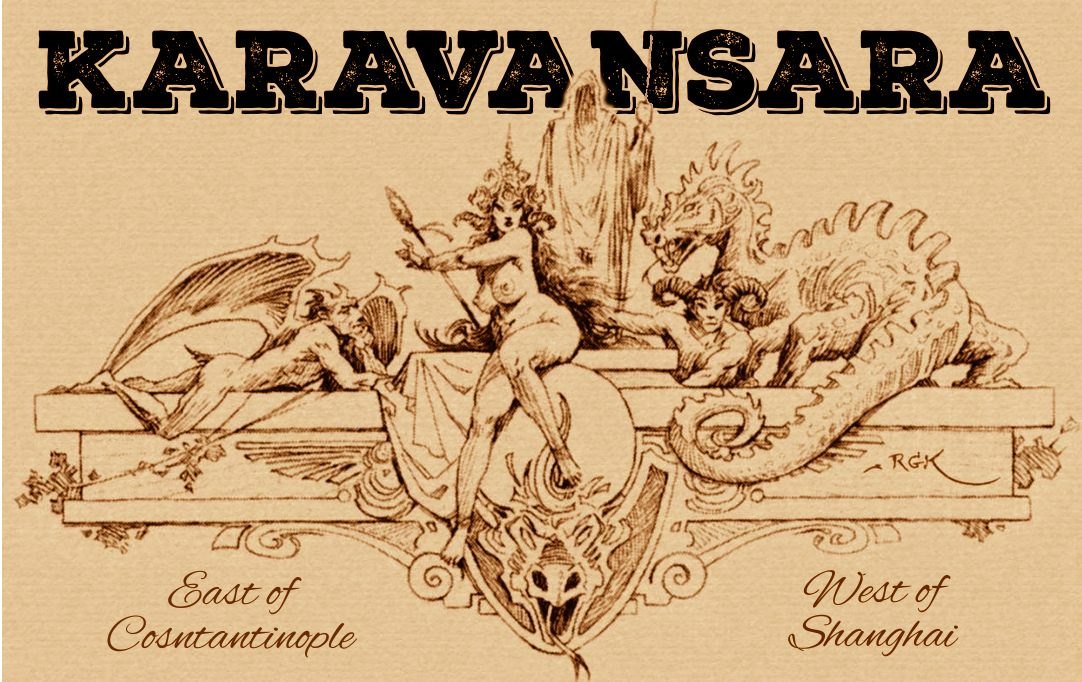She was the best man of the coupple
 I met her for the first time in Peter Fleming‘s News from Tartary, in which the English journalist and adventurer relates his experiences as a happy-go-lucky traveller in Chinese Turkestan (or Sinkiang, or Xinjan, or Tartary).
I met her for the first time in Peter Fleming‘s News from Tartary, in which the English journalist and adventurer relates his experiences as a happy-go-lucky traveller in Chinese Turkestan (or Sinkiang, or Xinjan, or Tartary).
There was a certain amount of curiosity, at the time – this being 1935 – about what was happening in those territories.
So off Fleming went.
And with him, went Ella “Kini” Maillart, a young Swiss woman that, according to Fleming’s account, was the true man in the outfit.
And it is not hard to believe.
Practical, organized, strong, and fearless, Maillart was the perfect companion for Fleming.
A forme Olympic competirtor, and a pioneer of Alpine climbing, 32-years-old Maillart had been travelling through the heart of Asia since the late ’20s, writing for a number of papers and publishing various books, both in French and in English – the most popular of which, Turkestan Solo, told her experiences as a solitary traveller in the western part of Turkestan.
Eastern Turkestan was another story – few westerners had been there in more than a decade (at least officially – and the area was in a very interesting position, exactly between freshly-formed Soviet Union and increasingly volatile China.
After the adventure with Fleming* – which she documented in her own book, Forbidden Journey – Maillart woud return to Asia in the late ’30s, this time undertaking a trip by car from Switzerland to Kabul.
The plan, apparently, was to go further, possibly reaching China and Peking – but pland had to change: Maillart’s travelling companion, this time, was not a foppish Brit journalist (and probably spy), but her friend (and maybe lover) Annemarie Schwarzenbach, a well-respected photographer and journalist.
Apart from having a serious drug problem, Schwarzenbach was a highly self-destructive character, serially promiscuous, with the unnerving habit of falling for the most compromising men – and women – at hand, and often pursuing the most scandalous relationships.
The travel – which was, as they say, no picnic – is described in Maillart’s The Cruel Way, which is probably her best-known work.
Plagued by Schwarzenbach’s failing health and dependence on heroin, the travel narrated in The Cruel Way is a long psychological battle, which Maillart ultimately lost upon reaching Kabul.
While she is not my favorite travel author, Maillart is a dry, moody author, whose excellent eye for details is counterbalanced by a strong capacity for insight.
Her works are a veritable gold mine of informations and impressions.
More informations and photographs can be found on her official website.
She died in 1997.
- We’ll have to talk about Ian Fleming‘s brother, one of these nights.



25 February 2013 at 11:41
It’s quite curious for me to note that there was more fredoom to travel in the ’20s and in
the ’30s than fifty or so years later. And what about the potential danger level? Before WWII
a lone woman, or a pair of women, can go thru some of most dangerous of the planet and come back unarmed. For a woman of the present times travelling in Afghanistan alone will be far more
risky.
LikeLike
25 February 2013 at 13:32
Indeed, the number of women travelling alone was impressive – but the same can be said for the early 20th century, and the victorian era.
One wonders if dangers were really less, or if they were just perceived as an inescapable part of the package.
Both ways, I find these ladies endlessly fascinating.
LikeLike
Pingback: Peter Fleming | Karavansara